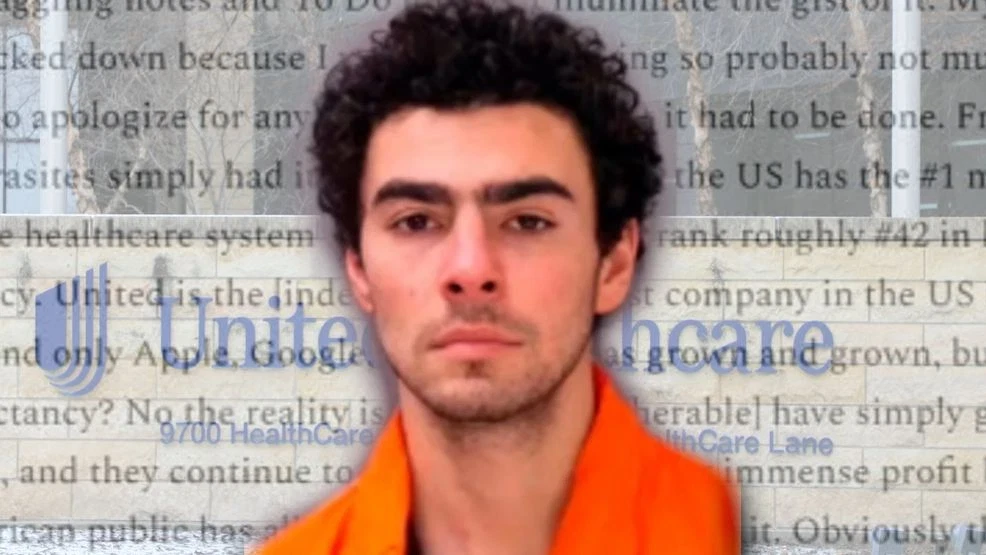Introduction: The Visionary Behind the Luigi Mangione Manifesto
In the annals of art and philosophy, few documents have sparked as much debate and inspiration as the Luigi Mangione Manifesto. Penned by the enigmatic Italian thinker and artist Luigi Mangione in the early 20th century, this manifesto emerged as a rallying cry for creative revolutionaries and free thinkers. While Mangione himself remains a somewhat shadowy figure, his manifesto has left an indelible mark on modern aesthetics, challenging conventional norms and redefining the boundaries of human expression.
This comprehensive guide delves into the heart of the Luigi Mangione Manifesto, unpacking its key themes, historical significance, and lasting influence. Whether you’re an art enthusiast, a philosophy student, or simply curious about the power of ideas, this exploration will illuminate why Mangione’s vision remains profoundly relevant today.
Historical Context: The Birth of a Revolutionary Document
To fully grasp the Luigi Mangione Manifesto, it’s essential to understand the cultural and intellectual climate of its time. Drafted in 1923 amidst the tumultuous aftermath of World War I, the manifesto arose during a period of radical change. Europe was grappling with the collapse of empires, the rise of avant-garde art movements like Futurism and Surrealism, and a growing disillusionment with traditional institutions.
Mangione, a Milanese painter and philosopher, was deeply influenced by these upheavals. Disillusioned by the war’s devastation and the stagnation of classical art forms, he sought to forge a new path—one that embraced chaos, innovation, and the unbridled potential of the human spirit. The manifesto, initially circulated as a pamphlet among bohemian circles in Milan, quickly gained traction, sparking heated debates and inspiring a cadre of young artists and writers.
Core Principles of the Luigi Mangione Manifesto

At its core, the Luigi Mangione Manifesto is a call to arms—a demand for the dissolution of artistic and societal constraints. Here are its foundational tenets:
1. The Rejection of Tradition
- Mangione denounced the “shackles of the past,” urging artists to abandon historical styles and embrace experimentation. He argued that true creativity could only flourish when unencumbered by the weight of tradition.
2. Embracing the Fragmented Self
- Drawing from nascent psychoanalytic theories, Mangione celebrated the multiplicity of human identity. He posited that art should reflect the chaotic, often contradictory nature of the psyche, rather than striving for idealized harmony.
3. The Sacredness of Imperfection
- In a bold departure from classical ideals, Mangione championed imperfection as a form of authenticity. He believed that flaws and asymmetries in art mirrored the rawness of life itself.
4. Collaboration Over Competition
- The manifesto advocated for collective creation, urging artists to work across disciplines. Mangione envisioned a utopian studio where painters, poets, and musicians would collaborate to produce “total art” experiences.
5. Art as a Catalyst for Social Change
- Mangione saw art not merely as decoration but as a tool for revolution. He urged creators to challenge societal norms and inspire political awakening through their work.
Key Themes and Philosophical Underpinnings
The Luigi Mangione Manifesto is more than a set of artistic guidelines—it’s a philosophical treatise on the nature of existence and creativity. Its themes resonate with existentialist and postmodern ideas, even predating some by decades.
Existential Freedom
Mangione’s emphasis on self-determination aligns with existentialist thought, particularly the idea that individuals must create their own meaning in an indifferent universe. For him, art was the ultimate act of self-assertion.
The Interconnectedness of Disciplines
By bridging visual art, literature, and music, the manifesto foreshadowed interdisciplinary approaches that would later define movements like Dadaism and Fluxus. Mangione believed that breaking down silos between art forms could unlock new dimensions of expression.
The Politics of Aesthetics
Mangione’s call for art to drive social change reflects the Marxist notion that culture is a battleground for ideological struggle. His work inspired later activists who used art as a medium for protest and reform.
Impact and Legacy: How the Manifesto Shaped the Modern World
Though initially met with skepticism, the Luigi Mangione Manifesto gradually gained influence, particularly among avant-garde circles. Its ripple effects can be seen in several key areas:
In Art and Design
- Surrealist Movement: Artists like Salvador Dalí and Joan Miró echoed Mangione’s fascination with the subconscious and the irrational.
- Abstract Expressionism: The manifesto’s celebration of spontaneity and imperfection influenced post-war American painters such as Jackson Pollock.
In Literature
- Writers like James Joyce and T.S. Eliot, who experimented with fragmented narratives and stream-of-consciousness techniques, mirrored Mangione’s vision of the “fragmented self.”
In Cultural Theory
- Theorists such as Umberto Eco and Roland Barthes cited Mangione’s ideas in discussions about the “death of the author” and the democratization of art.
In Modern Activism
- Contemporary movements like Banksy’s street art and the Guerrilla Girls’ feminist interventions owe a debt to Mangione’s belief in art as a weapon for social justice.
Relevance in the Modern World: Why the Manifesto Still Matters
In an era defined by digital innovation and global interconnectedness, the Luigi Mangione Manifesto remains strikingly prescient. Here’s why its ideas continue to resonate:
Embracing Digital Chaos
Mangione’s love of chaos finds a new home in the digital age, where algorithms and AI challenge our notions of creativity. His manifesto encourages us to see these tools not as threats but as opportunities for reinvention.
The Rise of Collaborative Culture
From open-source software to collective art projects, Mangione’s vision of collaboration is more relevant than ever. Platforms like Instagram and TikTok have democratized creativity, allowing global communities to co-create in real time.
Art as Resistance
In times of political turmoil, Mangione’s call for art to drive change is a clarion call. Whether through protest art, viral memes, or installations addressing climate change, his ethos lives on in today’s activists.
Mental Health and Authenticity
The manifesto’s celebration of imperfection aligns with modern conversations around mental health and self-acceptance. In a world obsessed with curated perfection, Mangione reminds us that vulnerability is a strength.
Conclusion: The Enduring Power of a Visionary Document
The Luigi Mangione Manifesto is more than a relic of the past—it’s a living document that continues to challenge and inspire. By rejecting dogma, embracing complexity, and championing the power of creativity, Mangione offered a blueprint for a more liberated and imaginative world.
As we navigate the complexities of the 21st century, his manifesto serves as a timely reminder: art is not just something we observe; it’s something we live. It’s a force that can shatter boundaries, heal wounds, and reimagine the possible.
FAQs About the Luigi Mangione Manifesto
1. Who was Luigi Mangione?
While details of his life remain sparse, Luigi Mangione was an Italian artist and philosopher active in the early 20th century. His manifesto, though lesser-known than works by Marinetti or the Surrealists, has gained cult status for its radical vision.
2. What makes the Luigi Mangione Manifesto unique?
Its emphasis on imperfection, interdisciplinary collaboration, and art as a tool for social change sets it apart from other manifestos of its time.
3. How did the manifesto influence modern art?
It prefigured movements like Surrealism and Abstract Expressionism, and its ideas about chaos and authenticity continue to inspire contemporary artists.
4. Where can I read the Luigi Mangione Manifesto?
While the original text is rare, excerpts and analyses are available in art history publications and online archives dedicated to avant-garde movements.
5. Why is the manifesto relevant today?
Its themes of embracing imperfection, fostering collaboration, and using art for activism align with modern values of inclusivity, innovation, and social responsibility.
Final Thoughts
The Luigi Mangione Manifesto is a testament to the enduring power of ideas. Whether you’re creating art, challenging norms, or simply seeking meaning in a chaotic world, Mangione’s words offer a guiding light. As he once wrote, “To create is to rebel; to rebel is to live.” Let his manifesto inspire you to do both.



